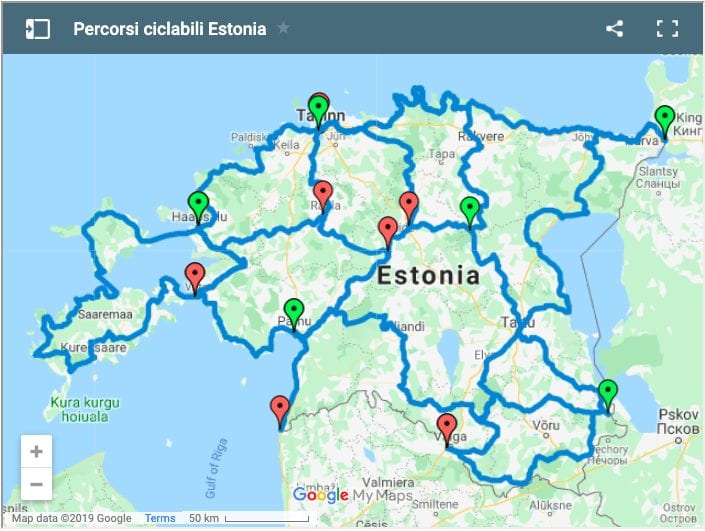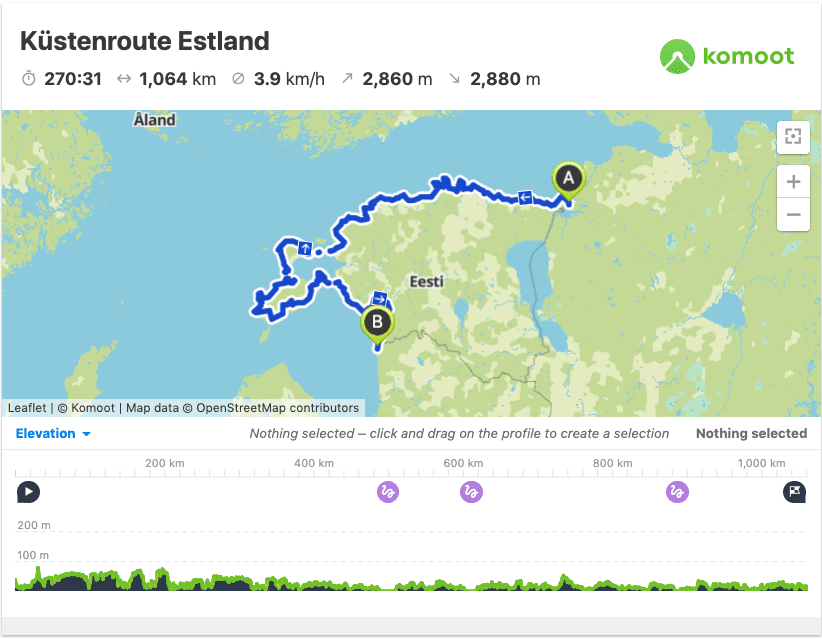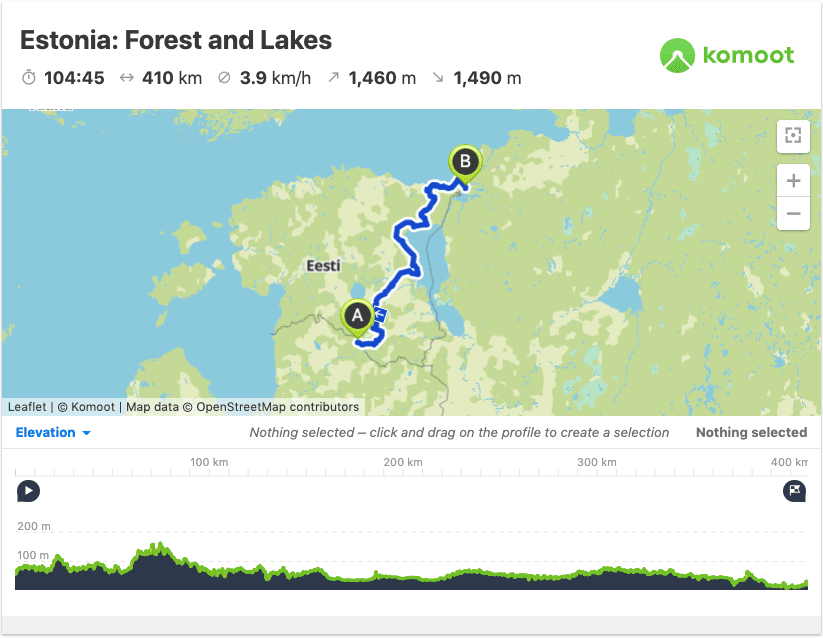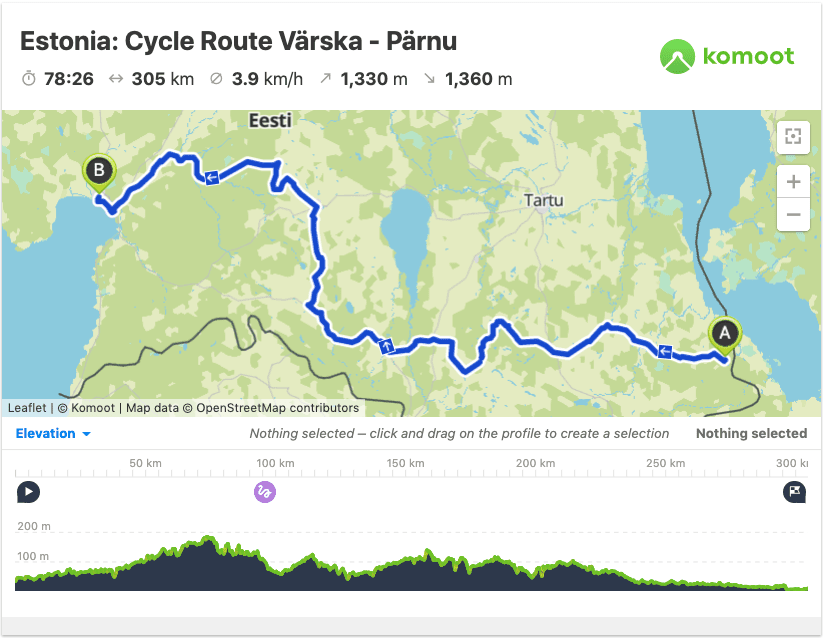Last Updated on 22 August 2024 by Cycloscope
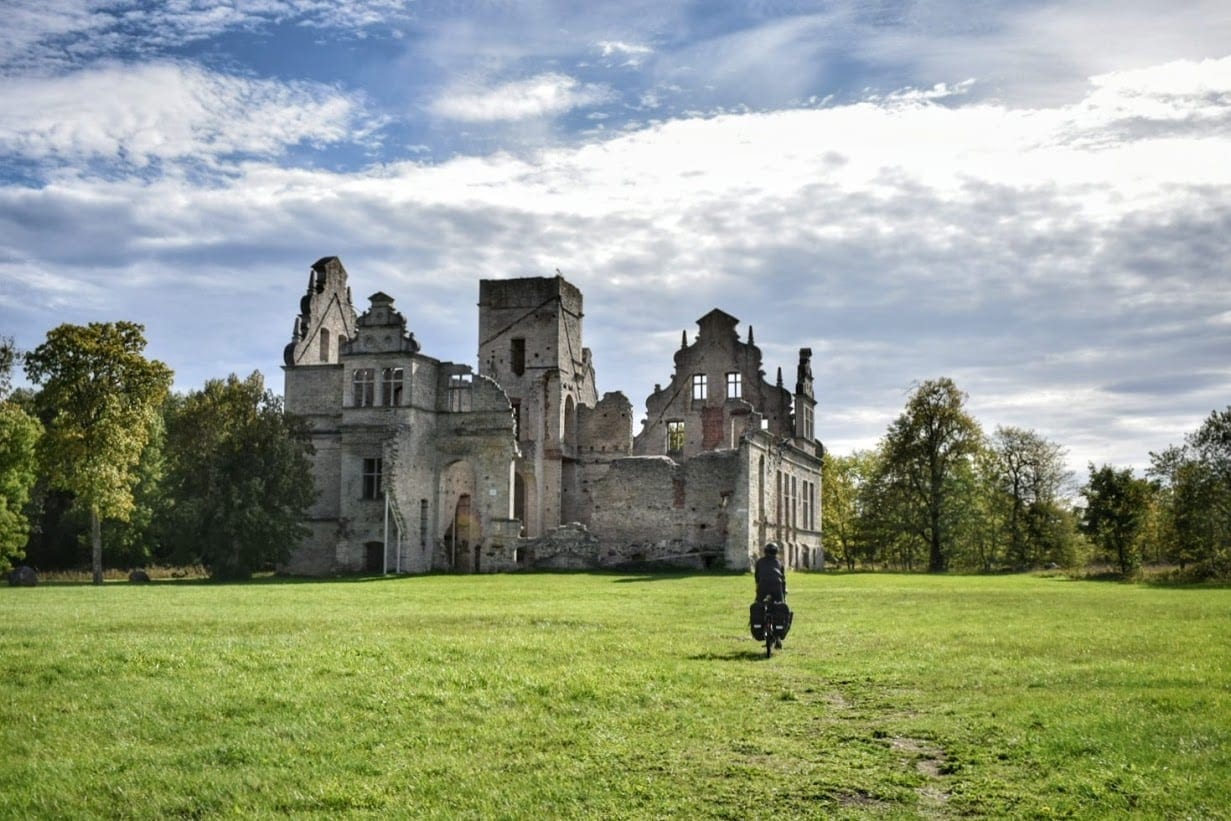
How to organize a bike and camping trip in Estonia: the most beautiful itineraries and the less known attractions, where to sleep, the costs, the climate. In short, everything you need to organize and leave!
Estonia is a country that in recent years is attracting more and more tourists, both for its nature and for the beautiful medieval cities, but also for what remains of the period of Soviet occupation.
In this travel blog, we’ll describe itineraries and give some advice to travel Estonia on a budget, aiming to give our readers a useful travel guide both for those who travel by bike and for those who don’t.
We arrived by ferry from Helsinki, Finland, to Tallinn, the capital of Estonia and we cycled the Baltic coast of the north and then down south to enter into neighboring Latvia.
Estonia is a small flat country, an ideal first destination for bike touring beginners, for a family cycling holiday or just to spend a few days/weeks relaxing without the need for any particular physical training.
In this article we will talk about our itinerary in Estonia, which you can travel by bike, hitchhiking, public transport or whatever you want, things to see in Estonia, in Tallinn and beyond and what are the costs and tips to travel Estonia on a budget.
You are interested in what to see in Tallinn, here our list of things not to be missed
Check Also
- Eurovelo 10 – The Ultimate Guide to Latvia and Beyond
- Cycling in Poland – all the best routes and things to know
- Bike Touring Slovakia – the wonder of Carpathians
- Finland by bike – everything you need to know
- Ferry from Helsinki to Tallinn – a cheap and cool experience
Climate in Estonia
Estonia is the coldest of the Baltic Republics (Estonia, Latvia, and Lithuania), the climate is continental Baltic, that is characterized by rather cold winters, with temperatures for the greater part of time below zero, and mild and rainy summers. The coastal part of the country enjoys slightly more pleasant temperatures than the inside but it is rainier.
Temperatures begin to become acceptable from mid-May, to reach summer with average temperatures around 20 degrees during the day and 10 during the night. Autumn is the wettest season and days get shorter quickly.
The sea is very cold, and in winter it is in many places frozen, in fact you can drive from the mainland to the island of Sareema, otherwise reachable by ship equipped with icebreakers. In summer, the temperature of the water is still cold, with a maximum of 17 degrees, but if you want to try a bath, bring a wetsuit or a lot of courage.
To make it even more difficult to swim, and to ride more of a gamble, is the infamous Baltic wind. The wind in Estonia is practically daily, constant, and often pretty strong. We have been traveling around Estonia for about two weeks and have never had a windless day, you’ll learn to watch the wind forecast here.
Best time for a bike ride in Estonia
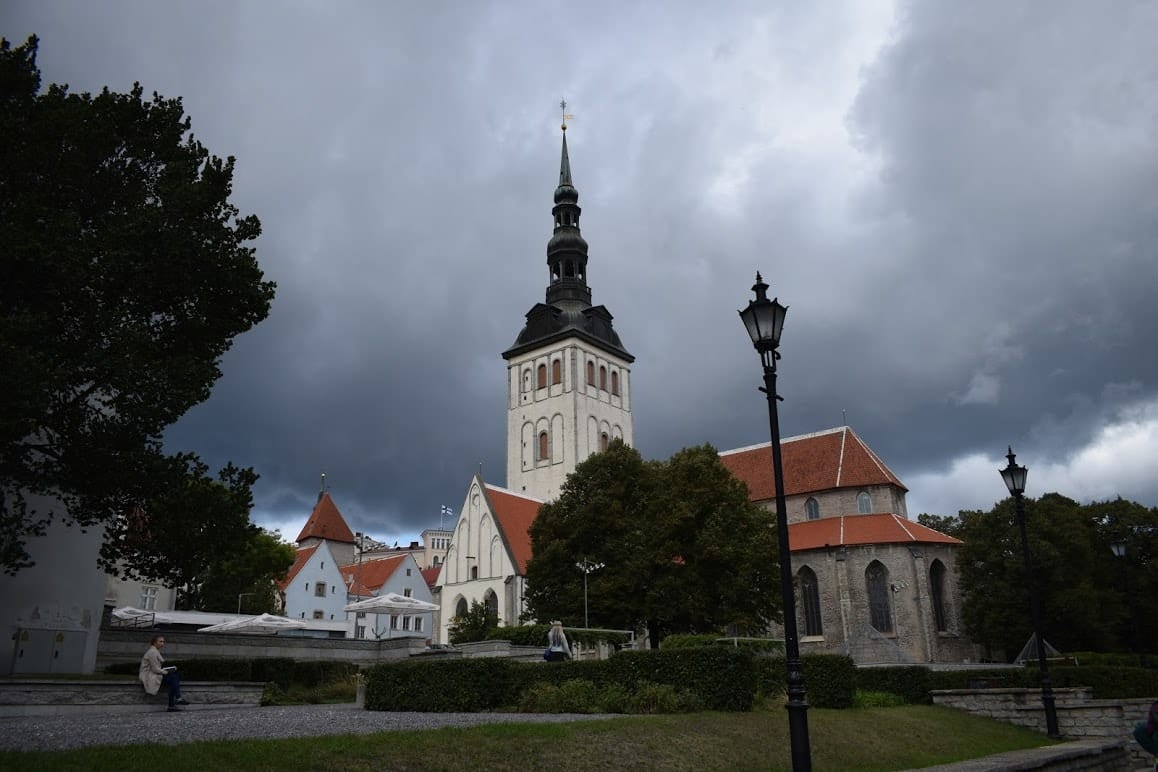
The best time to visit Estonia, by bike or not, is definitely the summer, a rule valid for all the countries of the north. Not only for the temperatures decidedly more human but also for the hours of light available, ranging from only 6 hours of light in December to 19 hours in June.
You will have so much time available to visit the country without having to worry about looming obscurity and this is even more true for those of us who travel by bicycle.
We were in Estonia at the beginning of September and the temperatures had already started to be low, around zero, during the night, but still pleasant during the day, especially because of sunny days. But it was always very windy, which made it difficult to ride, despite the flat roads, and pitch the tent.
Cycling the Roads in Estonia
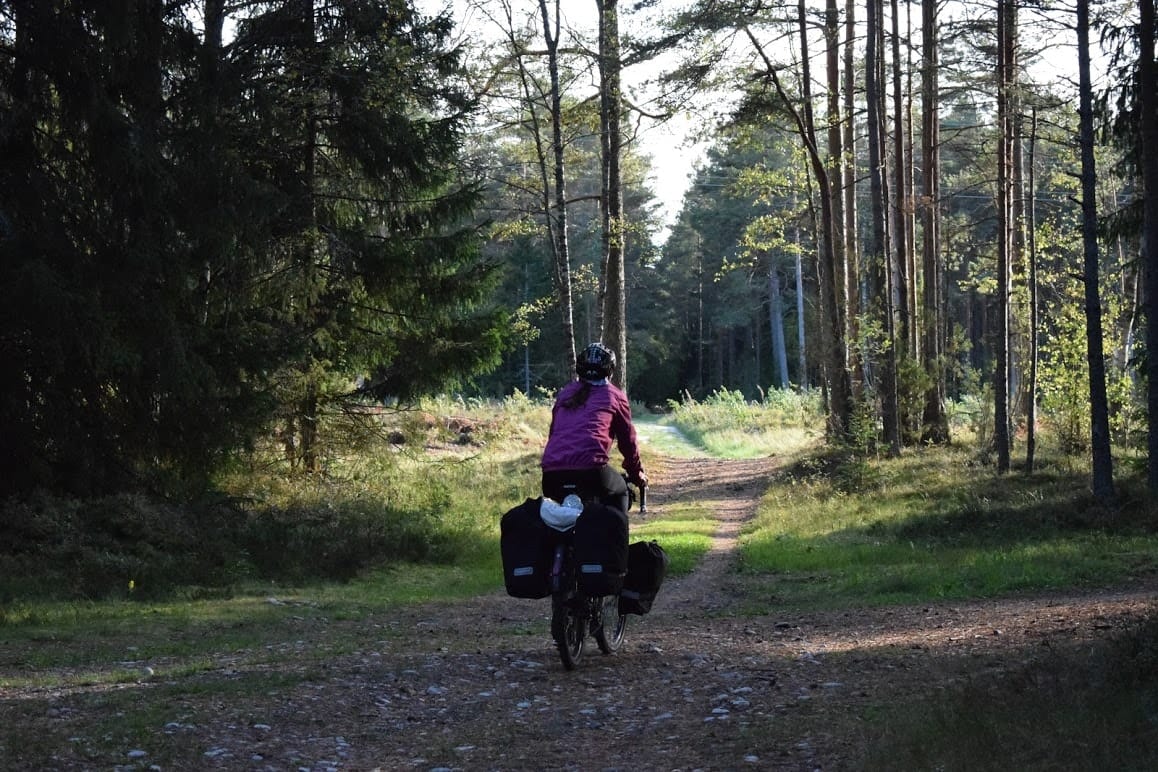
Most of the main roads in Estonia are perfectly paved, traffic is never too heavy, except in the routes connecting the main cities, but there are always alternative routes.
Just as in Finland there are many unpaved roads in the forest, mostly well kept and perfectly rideable by bike. Those are useful to find a good place to put the tent and spend the night, but beware that some trails can get muddy after heavy rains.
Where to sleep in Estonia
Wild camping in Estonia
In Estonia free camping is not forbidden but even encouraged, it is allowed on government land (called Riigimets) even if some national parks may have restrictions; in this case, you will find signage at the entrance. There is a great culture of free camping and you shouldn’t have any problems with the locals.
There is a fairly extensive and constantly developing network of huts or shelters with a fireplace and firewood, usually equipped with compost toilets. To find out the location you need to go to the RMK site, click on “for hikers” and then on “where to go”, in this page you can select the area you are interested in and the type of shelter you are looking for (campsite, campfire, hut etc.).
Once you get the results you can see the GPS coordinates, any rules of the place, if there is a bathroom, if it is accessible to disabled people and other information, as well as a phone number to contact in case of need or to collect the keys of closed shelters. By clicking on “booking” you can book the shelters for a fee.
Looking for a comfortable camping sleeping pad?
Check our review of the Thermarest ProLite
Campsites in Estonia
Equipped campsites in Estonia are quite common and very cheap, from about 4€ upwards for a tent and two people. They usually are basic facilities but mostly feature everything you’ll need.
Some also have wooden bungalows as happens in Scandinavia. For what is our experience, almost all campgrounds close at the end of September, some even earlier.
Hotels and Hostels in Estonia
Hotels and hostels in Estonia are a little more expensive than the other Baltic republics. The cheapest option is a bed in a hostel dormitory.
If, however, you do not want to share the room we have found the apartments very convenient. At least for those traveling by bike, they are perfect, they cost more or less like a hotel room (but in many cases even less, being managed by individuals), are equipped with a kitchen and washing machine and you can keep your bike at home.
Check Great Value Accommodation in Tallinn
Couchsurfing and Warmshowers in Estonia
The Warmshowers community is not very large in Estonia, we did not have much luck but it never hurts trying. Couchsurfing has a large community but they are mostly in the cities.
For those who do not know what Warmshowers and Couchsurfing are, take a look here.
Costs of a cycling trip in Estonia
Estonia is a fairly cheap country by European standards, for us coming from Scandinavia it seemed very cheap. A night at the campsite costs about 5 euros and one night in a hotel from 20 euros up (for a double room).
The food in the supermarkets is very varied and the prices are low, eating at a restaurant costs about 5 euros each (in a popular restaurant). Vegetables and cheeses are cheap especially if bought at the market.
8 most beautiful cycling routes in Estonia
Estonia is a country that is focusing a lot on cycling, although it is not a stunning country in terms of landscape, it still has many interesting things to see and a capillary network of cycling trails that will lead wherever you want through dedicated cycle paths, dirt-tracks crossing forests or roads shared with cars but without traffic.
- EuroVelo 10: the Baltic Sea cycle path
- Cycle Route 4: from Tallin to Valga
- Cycle Route 3: the road of forests and lakes: Haapsalu – Rapla
- Värska – Pärnu
- Cycle Path EE16
- Vägeva – Mäo
- Cycle Path EE15: Viljandi – Elva
- Route EE13: Tallinn – Türi
1. EuroVelo 10: the Baltic Sea Cycle Path
You can download the GPX track here -> Cycle Route The coast and islands
The most famous cycle route in Estonia is the EuroVelo route 10. The EV 10 runs along the Baltic coast for almost 1000 kilometers and includes the islands of Muhu, Saaremaa and Hiiumaa and the Lahemaa National Park on the way to the Russian border and San Petersburg.
The bike path was completed almost twenty years ago and is signposted along the way, as well as things to see that require short detours, it is almost always on a dedicated path except in some parts, as for example on islands, where traffic is practically nil. We have cycled much of this route, starting from Tallinn, where we arrived by ferry from Helsinki, Finland.
The path is along the coast although you do not always have a sea view since in many sections the forest will separate you from the beaches. This helps to be a bit more sheltered from the constant winds.
This bike itinerary will take you around the peninsula of Paldiski, but we cut from the interiors. Paldiski is a living memorial of Soviet domination, old buildings and military structures have a rather depressing effect here – perfect for those dark tourism lovers.
What to see along the EuroVelo 10, the Baltic Sea cycle path
The northern coastal part, from Tallinn to Haapsalu
After passing Tallinn (below we will talk about Tallinn in detail), and heading west along the coast (a little far from the sea though, in Amari) you could visit a Soviet cemetery for pilots (GPS coordinates 59°15’00.6″N – 24°14’09.3″E ) and the submarine prison of Rummu, both very fascinating places, if you are interested in Soviet relics.
Some of the living quarters and facilities of Rummu are also a good place to camp, even if the atmosphere is a bit disturbing (here find the GPS coordinates and the history of this place).
You will also encounter many signs indicating the presence of ancient churches and a lot of kolkhozes, the old Soviet collective farms, some abandoned in ruin and some still used nowadays.
Near the town of Haapsalu, you will see the ruins of the Ungru Manor along the road, with its sad and romantic history.
Precisely because this is Estonia, nearby is also the Haapsalu Airfield, kilometers and kilometers of airstrips and hangars for military aircraft that are now used by locals for clandestine car races.
Haapsalu
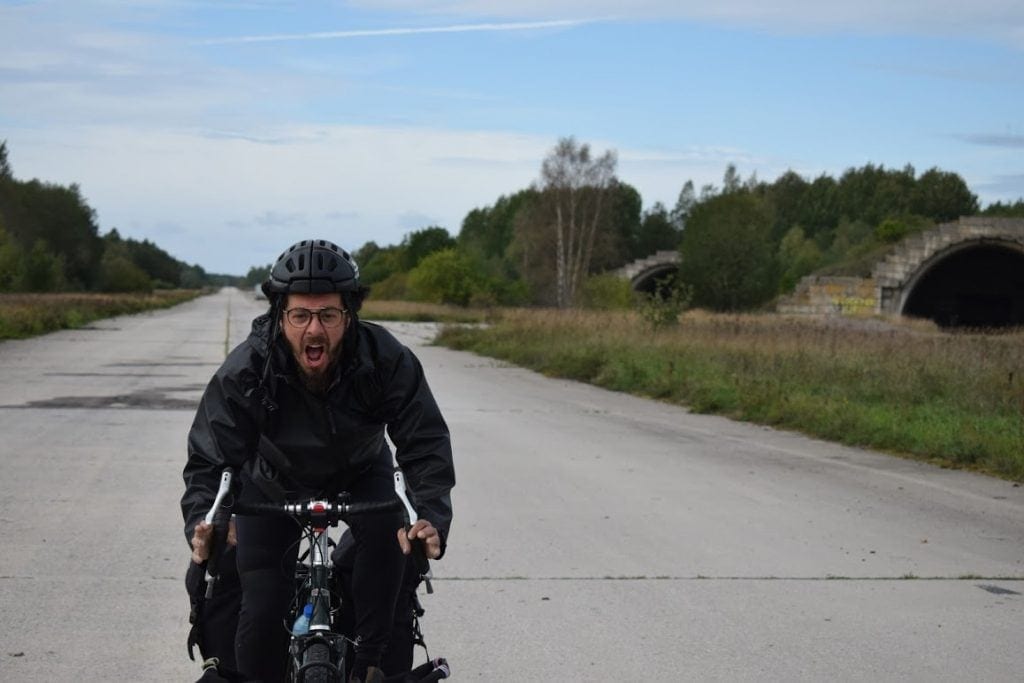
Haapsalu is a very beautiful town that deserves to be visited, its characteristic wooden houses are perfectly preserved as well as its castle (Haapsalu Piiskopilinnus) which dates back to the eleventh century.
Walking along the sea you can admire the reproductions of floating wooden sculptures. Some great pieces of Art Nouveau architecture can be found here.
Continuing along the path to Rohuküla, the port from which you can reach the islands, you will meet the early 19th-century Art Nouveau railway station and an exhibit of old trains and locomotives.
Cycling the islands in Estonia: Hiiuma and Sareema
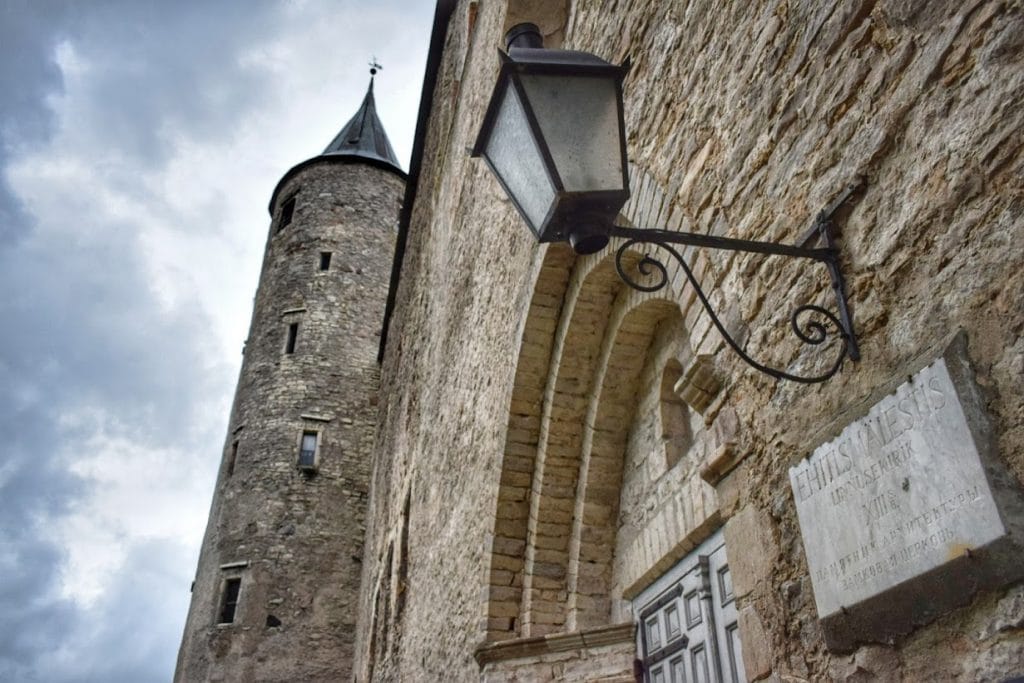
Hiiuma Island
From Rohuküla you can board the nearby island of Vormsi or the island of Hiiuma, we have chosen the second one. The ferry will leave you at Heltermaa’s port, on your arrival you will find a map with the cycle routes (routes No. 301 and 302) and the most interesting things to see. There are about 5 ferries per day sailing this route.
We cycled to Parna, the port south of the island, right at the port there is a museum with adjoining lawn where you can camp freely (the same happens near the port of Heltermaa) and there is also a compost toilet.
Hiiumaa most interesting sight is plenty of lighthouses, the most famous being the Kõpu lighthouse, one of the oldest in the world. Besides that, we found Hiiumaa pretty monotonous.
As far as we can tell there is only one daily ferry connection Hiiumaa (Parna) to Sareema (Soela), departing around 8 am from Hiiuma and in the evening from Sareema, bikes go free. This ferry connection is not operative in winter or when weather conditions are too harsh.
Sareema Island
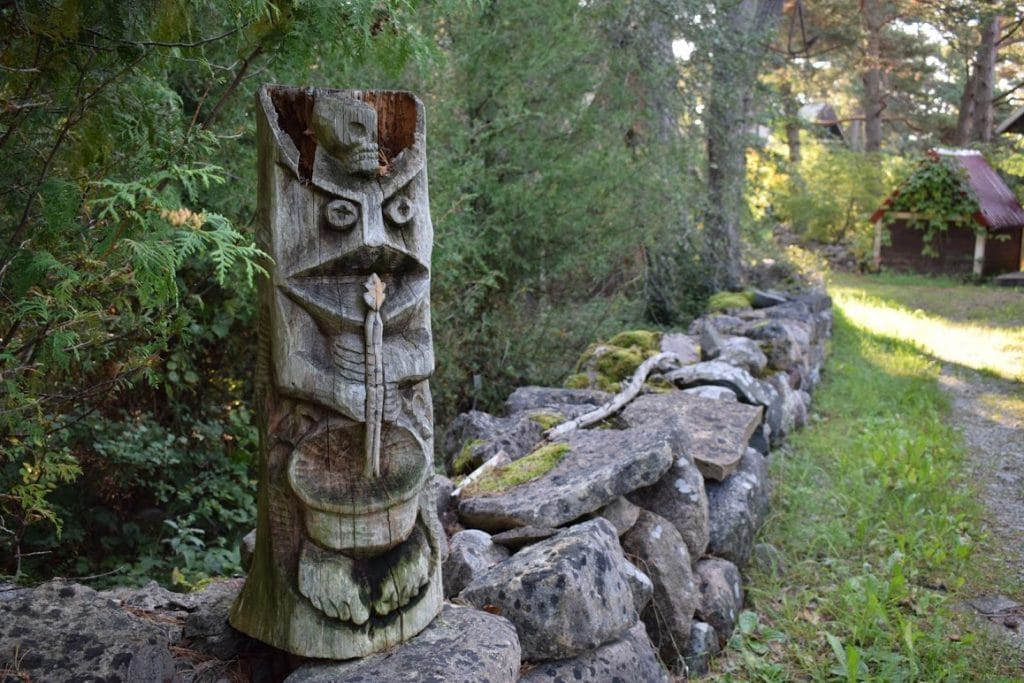
From Parnu, the ferry will take you to the island of Sareema in about an hour. Arrived at the port there is a small wooden building, on the right, where you have a shower and sauna, free to use!
Sareema too is not the most exciting ride, but it has a relaxed atmosphere and a few interesting sights that made us like it more than Hiiumaa. Worth seeing is the meteorite crater in which a lake formed, is called Kaali Crater and is located in the homonymous village.
Also worth is the open-air museum of the traditional windmills of the Vilsandi National Park, the church of Valjala and the castle of Kuressaare. Kureesaare is a medium-sized town that with a pleasant historical center and one of the most beautiful castles in Estonia.
There are however places to sleep at affordable prices, both campsites and guesthouses, we opted for free camping on a birdwatching tower that offered a beautiful view (GPS coordinates: 58 ° 14’05.5 “N 22 ° 27 ‘ 03.0 “E).
Valjala Church and St. Catherine’s Church
Two medieval churches with a long history and a living mystery, the construction of Valjala church started immediately following the Livonian Crusade, in 1227, when Christianity was imposed to Estonia, the first church in these lands.
St. Catherine’s Church at Karja was built shortly after and presents some unusual magic signs painted on the ceiling. Both churches have an intense aura of austere solemnity.
From Sareema back to Estonia mainland

From Kuressaare we took a bus back to the mainland since we did not want to do the whole tour of the island. From Kuressaare, there were no ferries back to the mainland at the time of our visit.
Back on the mainland, in Virstu, the bike path will take you on a dirt road for about twenty kilometers, then you will reach the city of Pärnu, from which you have to go along a somehow busy road. Pärnu is developing as a summer resort town and there are often festivals and cultural events.
What to see in Tallinn
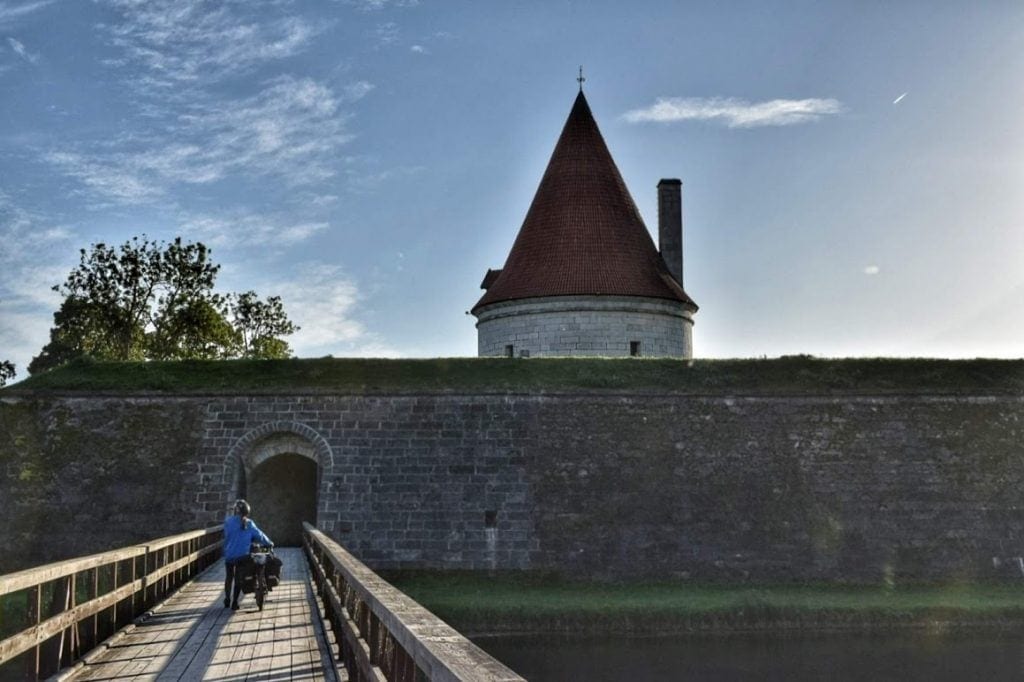
For those starting their trip in Estonia, or coming from Finland, Tallinn will probably be the first stop on the route.
The historic center of the Estonian capital is a UNESCO World Heritage Site, it is of impressive beauty and is so well preserved that you really feel like you are going back to the time of the Hanseatic League.
During the summer, free tours of the city are organized by the local students (it is good to leave a tip), you can get info from the tourist office. In Tallinn, you can rent a bicycle to explore the city and its surroundings.
Tallinn is not only a historical city, it is a mix of ancient, modern and what remains of the Soviet occupation, among the things not to be missed are the Seaplane Harbor, Telliskivi Creative City, and Linnahall.
The Seaplane Harbour Museum – Meremuuseum
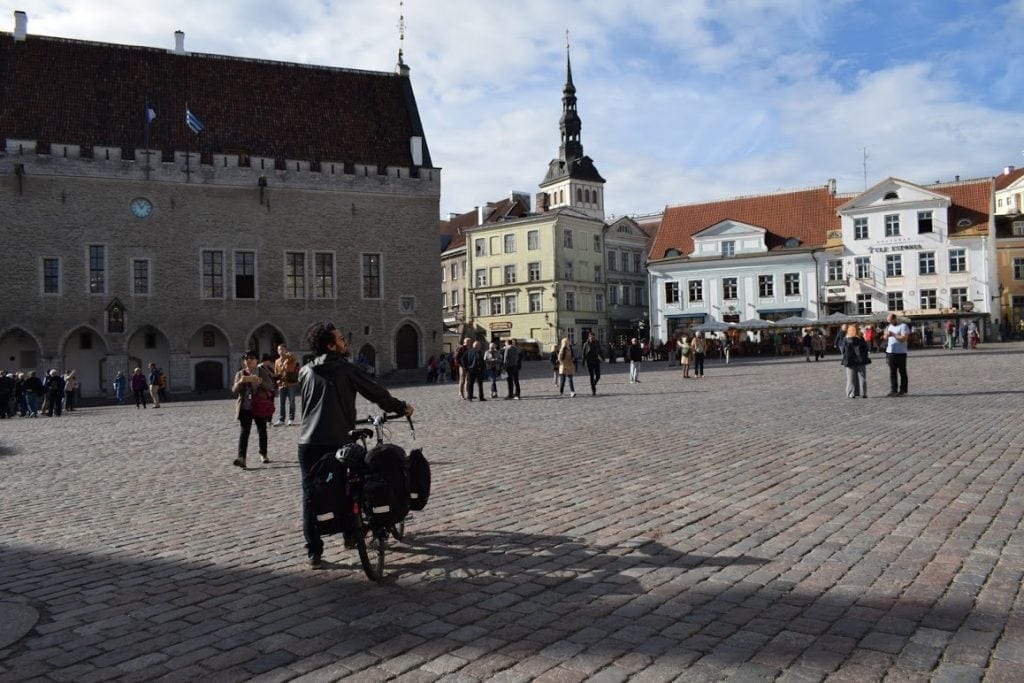
The nicest museum we saw on our bike trip in Europe, we highly recommend going to this impressive place. Set in a hall area of 8000 m², originally built to host seaplanes, the building itself makes the visit worthwhile.
The main attraction though is the pre-WWII submarine Lembit, which is fully visitable. First time for us to get inside a submarine, and we found it quite cool to imagine life onboard this steam-punk-looking machine.
The museum also contains a full-size replica of a British seaplane, as well as a exhibit of sailing-related historical stuff, unique to the region.
Outside the museum a series of ships are anchored, most of them climbable. Among these is the Suur Töll, the largest steam-powered icebreaker in the world, you can also visit the engine room to understand how it worked.
Keep in mind that you will need 2 or 3 hours for the visit. The entry fee is quite steep at 15€ per adult.
Telliskivi Creative City
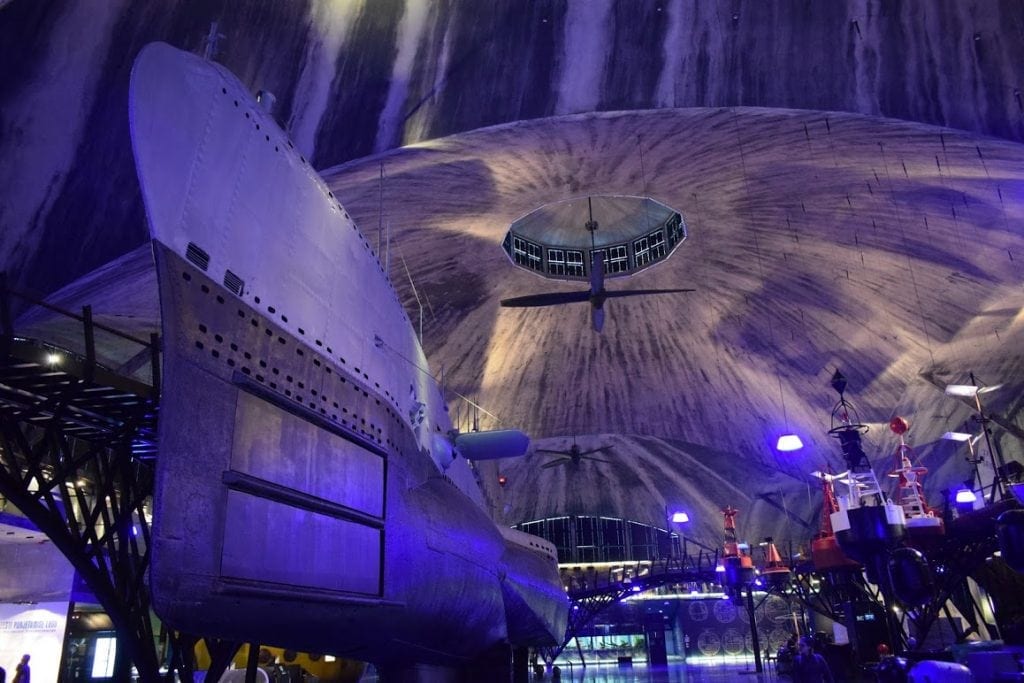
It is the largest creative center in Estonia and is about 15 minutes walk from the historic center, consists of 10 buildings housing more than 200 companies and organizations, has a relaxed and bohemian atmosphere.
Each individual company is free to design its own space as it sees fit. It is an excellent opportunity to get a taste of the local cultural life hanging out far from the masses of tourist buses that roam the narrow streets of the center.
Telliskivi is located near the railway station and has given a new face to the ugly abandoned Soviet factories that surround the area. If you do not want to walk or cycle you can reach this district with trams number 1 and 2 from the center, the bus stop is called Telliskivi.
We found it to be a bit too “hipster” and gentrified for our tastes, it was probably much more genuine some years ago, as testified by the change in the mural art styles.
Check Pictures and Reviews on Tripadvisor
Linnahall
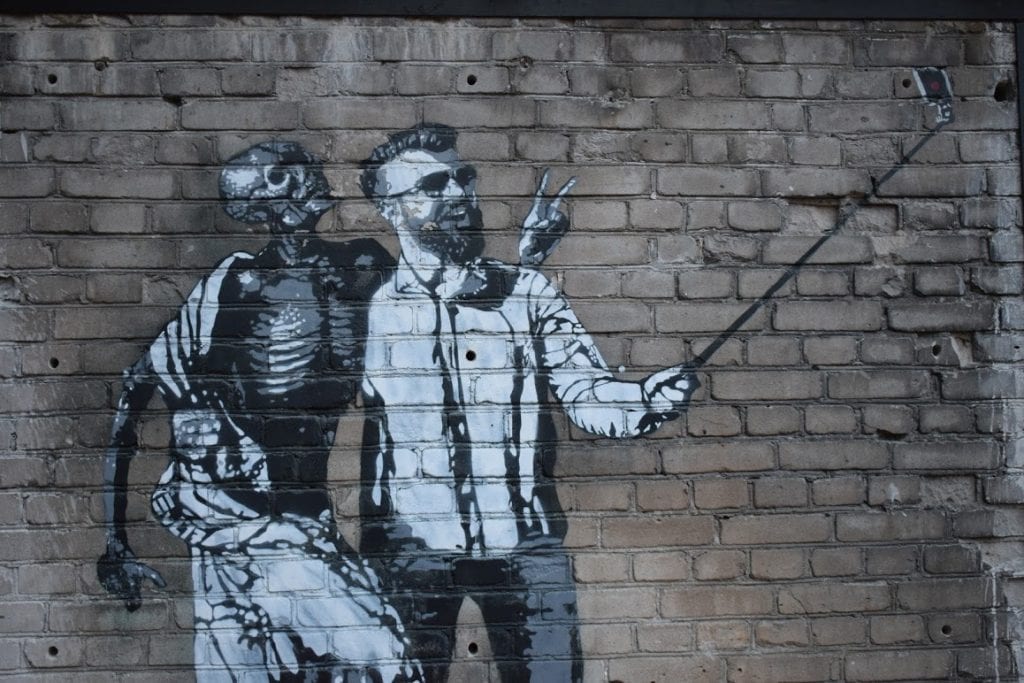
Linnahall is an imposing Soviet relic, built to house the Moscow Summer Olympics in 1980, the Linnahall of Estonia, now stands as an imposing concrete ghost town. Inside, an impressive 5,000-seat amphitheater was commissioned by the Soviet Union to show the world its grandeur.
The building was built in a very short time and, no longer serving any purpose after the Olympics, it was left to deteriorate. Going up the outside steps you will have a nice view of the sea and the old city.
2. Cycle Route 4: from Tallinn to Valga
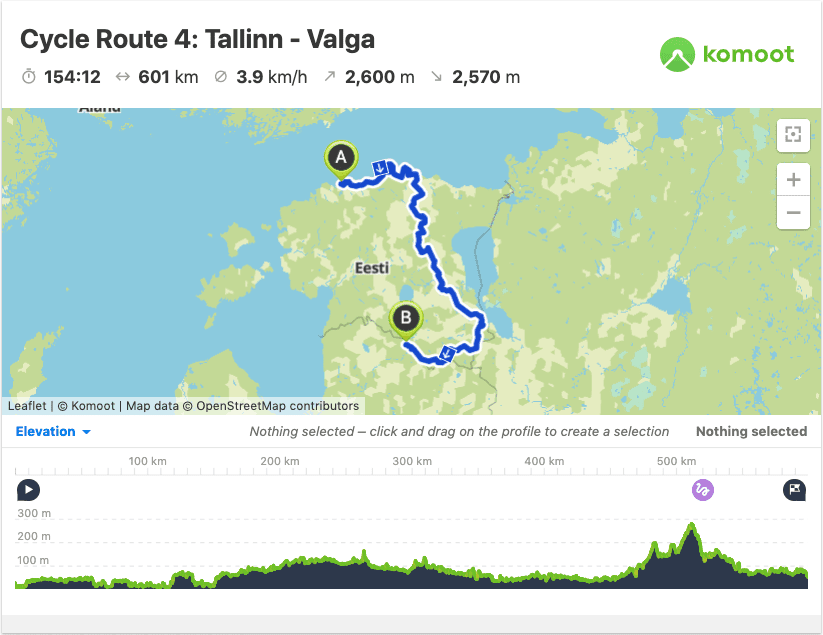
You can download the GPS track here -> Route Tallinn – Valga
Another interesting cycle route is the Estonian National Route No. 4, with its 600 kilometers it connects the Baltic Sea coast to Valga, passing through the beautiful town of Tartu. The first 45 km run in the woods, on a paved forest road with very little traffic.
The section that goes from Vastse to Roosa is a dirt road for more than half its length, about 47 km. It then becomes asphalted in the stretch that leads to Tartu. From Vahtseliina to Piusa you can take the alternative route number 281, this road is in the forest along the banks of the Piusa river. From Tartu you will reach Lake Saadjärv, there are the last 8 kilometers of dirt road and then the road is paved up to the north coast.
An alternative more in contact with nature are the cycle paths n. 201 and 205, well marked, which follow the hilly road and the surrounding lakes. From here the traffic becomes a little more intense and the road will take you near Endla Bog and Emumäe Hill, the pearls of this section of the journey.
From Lahemaa National Park the cycle path is superimposed on the EuroVelo route 10, in Loksa we meet stretches of dirt road for a total of about 20 km. Naturally, as you approach Tallinn, traffic becomes more important, but only for a few kilometers.
What to see along the 4 cycle route in Estonia

Besides the capital city of Tallinn, of which we have already spoken above, this routes crosses several points of interests worth exploring.
Tartu
Tartu is the second largest city in Estonia, its university dates back to the seventeenth century and since then it has been full of students and very lively. Among the things to see are the ruins of the cathedral, artu toomkirik in Estonian, an impressive red brick structure. There are also a few interesting museums including the Tartu Toys Museum and the AHHAA Interactive Science Centre.
Lahemaa National Park
The Lahemaa National Park is located about 70 kilometers east of the capital Tallinn, is a marshy area and also contains the large forest of Kõrvemaa, home to many large animals such as wolves, bears, lynxes, wild boars and elk.
Lake Saadjärv
Lake Saadjärv is one of the ten largest and deepest lakes in Estonia. It is a popular destination throughout the year offering various types of water activities. During the winter it is one of the places from which you can see the show of the northern lights.
3. Cycleway 3: the road of forests and lakes
You can download the GPS track here -> Cycle Route of the Forests and Lakes
From Narva, on the border with Russia, starts the Estonian National Route No.3, which runs along the shores of Lake Peipus and arrives at the border with Latvia. The total route is 398 kilometers long. A stretch of this cycle path, the one between Valga and Tartu, is part of the EuroVelo route n.11 which extends from Athens to the North Cape.
The most captivating areas are the Karula National Park in the vicinity of Lüllemäe, Otepää Highlands, the main tourist attraction in southern Estonia; and the summer resort town of Elva.
There are two stretches of gravel dirt road between Lüllemäe and Otepää, for a total of 17 km. It is worthwhile to make a longer stop in the Otepää region to ride on the many routes (No 261 – 265, currently not equipped with signs).
If you prefer gravel and forest paths to paved roads, you can go from Otepää to Elva along the 266 cycle path, which is 62 km long. The university town of Tartu also deserves a longer stay to visit the city.
From Tartu to Lake Peipsi, whose banks are inhabited by the old believers. After Mustvee the path goes away from the lake. The remaining distance from Rannapungerja offers pleasant roads with little traffic, with a few kilometers of dirt road.
Turning back towards Peipsi, you cycle along the most interesting part of the lake, along whose banks you can spend pleasant nights camping. Then through Iisaku, it is absolutely advisable to take a detour to the Kuremäe monastery before reaching the Kurtna landscape conservation area.
After reaching the northern coast the route coincides with Route 1 to Narva. The attractions of this section are the Toila-Oru Park, the high limestone cliff, the Stalinist-style industrial city of Sillamäe, the former tourist resort Narva-Jõesuu and the border town of Narva. A bit inconvenient for the cyclist is a gravel and dirt track of about 5 km from Voka to the Tallinn-Narva highway; in addition, the motorway must be used for three shorter sections.
Narva
Narva is the third largest city in Estonia, located on the border with Russia, to the east of the country. It is inhabited mainly by Russians and is a place left aside by the central government after the collapse of the Soviet Union.
The city houses the beautiful Cathedral of the Resurrection, and the majestic castle fortress, Hermanni Linnus in Estonian, which overlooks the river that determines the border.
In the court yard there is the statue of Lenin, the only one left intact in the Baltic Republics, which was symbolically oriented towards the Ivangorod Fortress, in Russia, which constituted a single architectural ensemble.
Check the best places to stay in Narva
Peipus lake
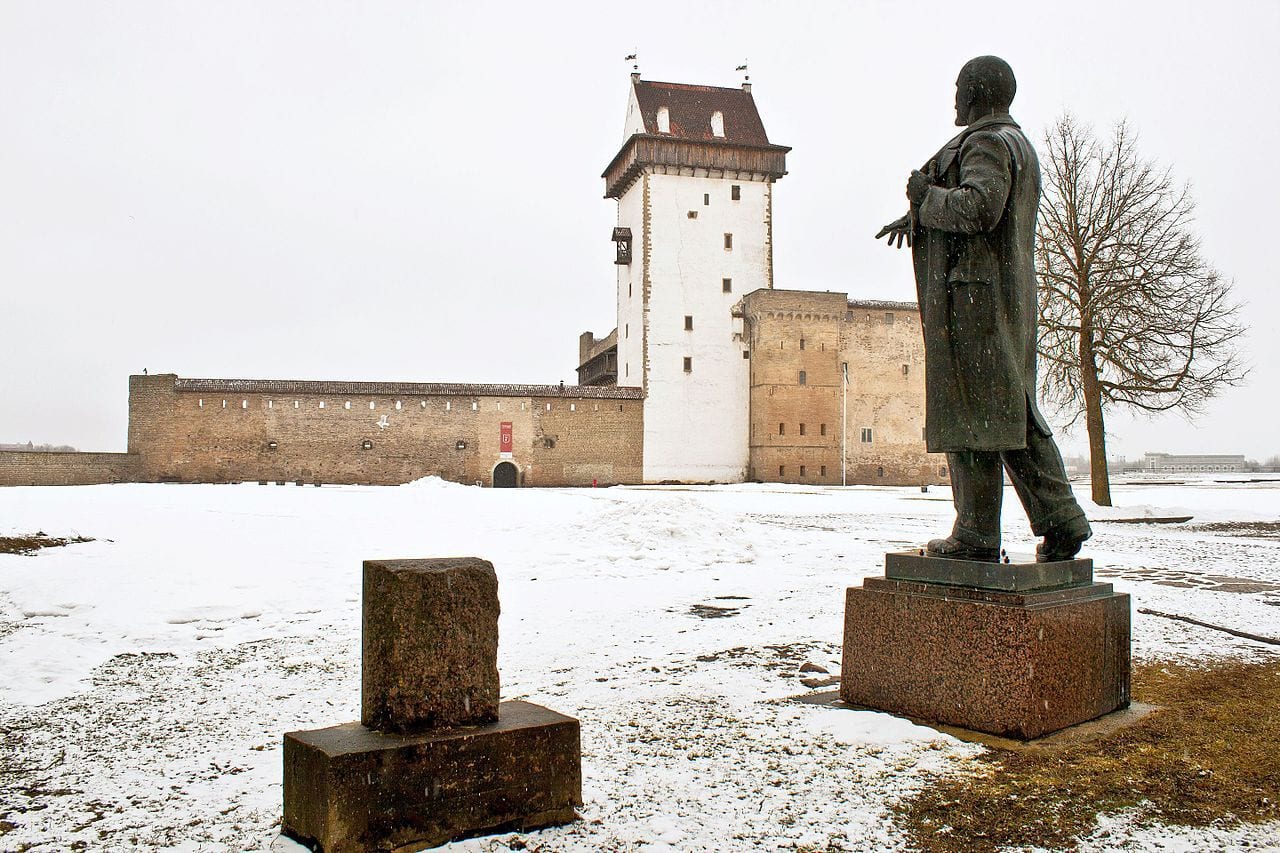
Peipus Lake is the largest cross-border lake in Europe, being cut in half by a line separating Estonia and Russia. On its banks live the Old Believers, who opposed the teachings of the Russian Orthodox Church and live in Estonia, since the seventeenth century.
Their houses are built in traditional style and people still practice the old Orthodox religion, prior to the reform of the mid-seventeenth century. In Kolkja you can visit the Museum of Old Believers.
4. Cycle Route Värska – Pärnu
You can download the GPS track here -> Route Värska – Pärnu
This route crosses Estonia in the east-west direction. Starting the tour from the historically interesting Setu County, you’ll soon enter a scenic area. However, the most picturesque places, such as the Meenikunno Bog and the sandstone outcrops of the Võhandu and Ahuja rivers are located off the course.
From Põlva you cycle to the Otepää plateaus, there are also alternative local cycle routes such as 261 and 265, we do not know if the signage is complete.
Here you can visit the Sangaste Mansion, go through Tõrva and then towards Karksi-Nuia along the Valga-Pärnu road, where the traffic is quite intense.
After a few hills on which you will meet Viljandi Castle, there is the Soomaa National Park. For the first time on this route we arrive on a dirt roads that exceed 50 km in length.
At the same time, the surrounding nature has a completely different appearance: there is a high mosaic soil and there are swamps accessible by locally marked tracks.
Unfortunately, the roads are often flooded and full of horseflies in spring, and difficult to ride by bike. However, most of the experiences gathered by cyclists on this route have been very positive. Between Jõesuu and Pärnu, the route overlaps with Route 2. The last 30 km to Pärnu proceed smoothly on a good road.
Other short cycling routes in Estonia
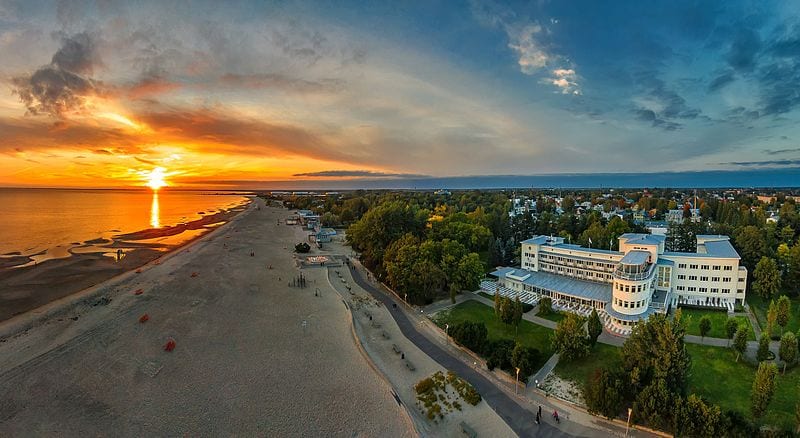
5. Bike Route EE16 Vägeva – Mäo 44 Km
This route connects Central Estonia with the eastern regions of the country and with Route 4. Going through the central Estonian settlements, you will see enchanting lakes. Endla Bog is not far. Only about 9 km of this trail are dirt roads.
The GPX track of this route is available here.
6. Bicycle Route EE15 Viljandi – Elva 67 Km
This track combines the routes n.3 and 5, overlapping one of the favorite tourist directions of northern Estonia. The main attraction of this route is Võrtsjärv, the second largest lake in Estonia.
Currently, the road on the lake is limited in some places and subject to a fairly heavy traffic load. Plans for the next few years include the reconstruction of this stretch of road, which should make it more enjoyable with cyclists. The route is completely on paved roads.
The GPX track of this route is available here.
7. Cycle Way EE13 Tallinn – Türi 119 Km
This route allows you to avoid the motorways of central Estonia. The journey proceeds on paved roads alternately flanked by forests and fields, passing through numerous villages and the cities of Rapla, Kohila, and Saku. Closer to Tallinn, the population and traffic become more intense.
The GPX track of this route is available here.
8. Haapsalu – Rapla
This short cycle path is almost completely in the forest, the road is paved except for 15 kilometers connecting Martna and Kullamaa. You will pass through many quaint little villages and is a good option to connect to Haapsalu and the islands of central Estonia.
You can read what to see in Haapsalu and its surroundings in the paragraph on “What to see along the EuroVelo 10, the Baltic Sea Cycle Path”, above in this article.
The GPX track of this route is available here.
You are interested in what to see in Tallinn, here our list of things not to be missed
Did you find it useful? Do you have more information or advice on Estonia?
Share, comment and follow up on social networks!


